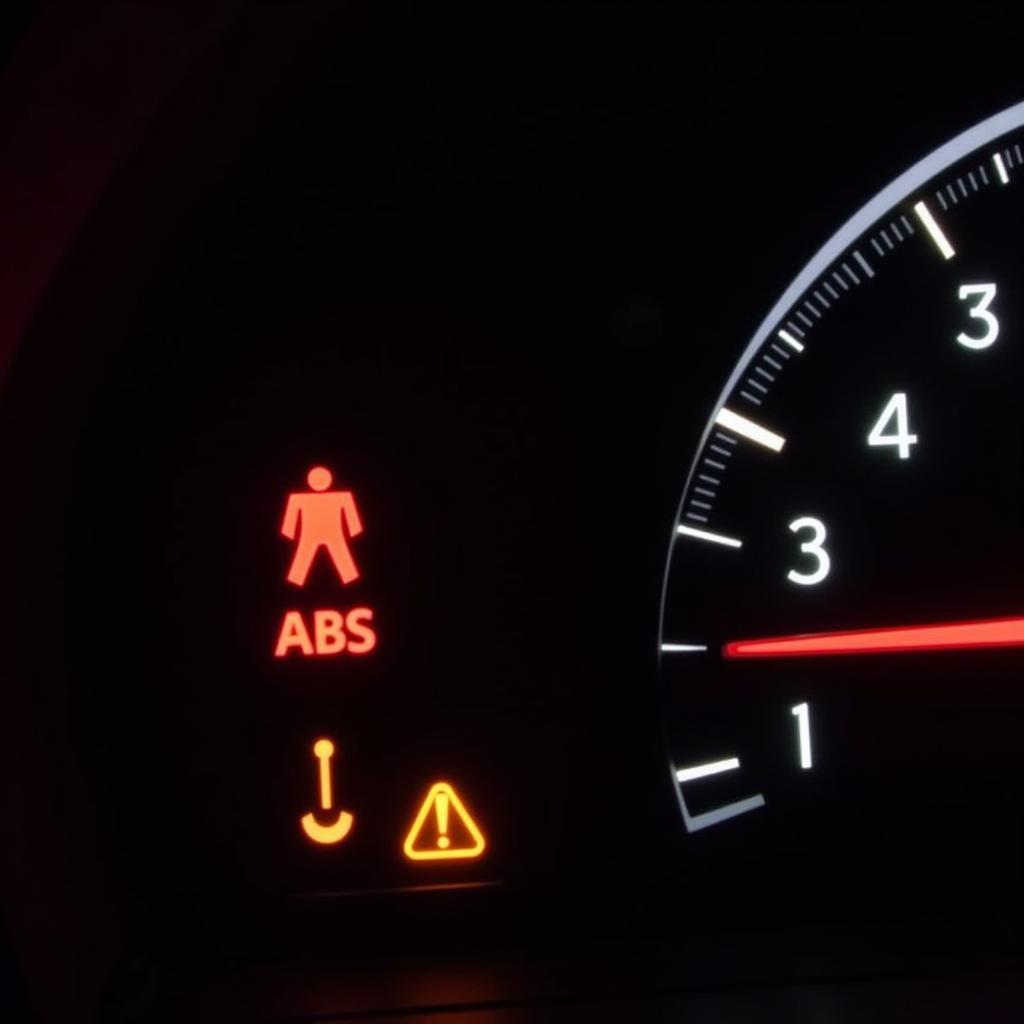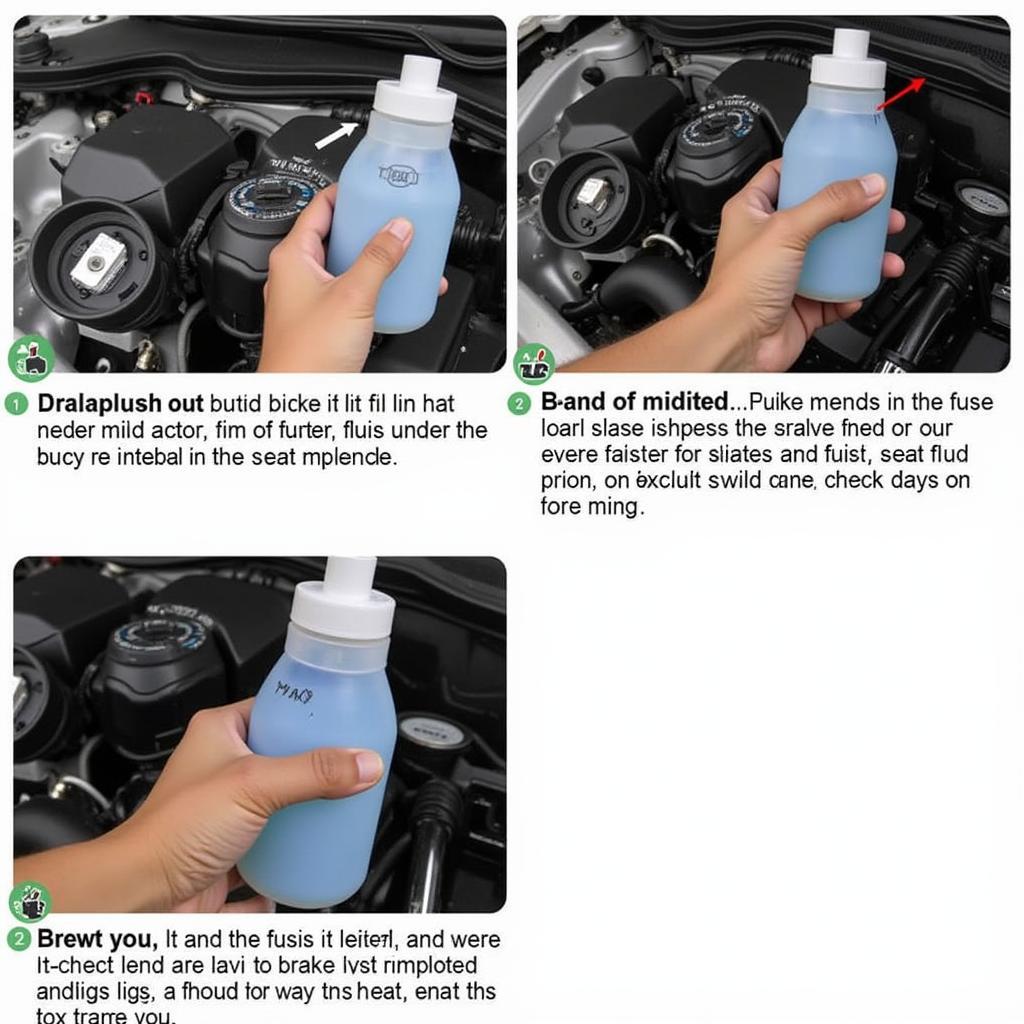The ABS (Anti-lock Braking System) light and handbrake warning appearing simultaneously on your Seat Ibiza’s dashboard can be a cause for concern. These warning lights are your car’s way of telling you something needs attention within these critical safety systems. This comprehensive guide delves into the common causes, troubleshooting tips, and possible solutions for this issue, empowering you to take control and get back on the road safely.
Understanding the Warning Lights
Before we dive into the specifics, it’s essential to understand what each warning light signifies:
- ABS Light: This light, often represented by a circle with “ABS” inscribed, indicates a problem with your Seat Ibiza’s Anti-lock Braking System. The ABS prevents your wheels from locking up during hard braking, helping you maintain steering control.
- Handbrake Warning Light: This light, typically depicting an exclamation mark within a circle and sometimes accompanied by the word “BRAKE,” indicates an issue with your parking brake system. It could mean the handbrake is engaged, there’s a problem with the brake fluid level, or a fault within the system itself.
Seeing both lights illuminated simultaneously suggests a potential connection between the two systems or a common underlying issue.
 Seat Ibiza dashboard with ABS and handbrake warning lights illuminated
Seat Ibiza dashboard with ABS and handbrake warning lights illuminated
Common Causes of Simultaneous ABS and Handbrake Warnings
Several factors can contribute to both the ABS and handbrake warning lights illuminating on your Seat Ibiza:
- Low Brake Fluid Level: This is one of the most common culprits. Brake fluid is essential for transmitting force from the brake pedal to the brake calipers, activating the braking system. When the brake fluid level drops too low, it can trigger both warning lights.
- Faulty ABS Sensor: ABS sensors monitor the speed of each wheel and relay this information to the ABS control unit. A malfunctioning sensor can disrupt this process, leading to inaccurate data and triggering the ABS warning light. Since the handbrake system often utilizes the same wheel speed sensors for certain functions, a faulty sensor can also trigger the handbrake warning.
- Worn Brake Pads: While worn brake pads primarily trigger the brake pad wear indicator, in some cases, extremely worn pads can indirectly affect the ABS system and trigger the warning light. This happens when the brake caliper pistons have extended significantly to compensate for the worn pads, potentially affecting brake fluid pressure and triggering the handbrake warning.
- Damaged Wiring or Connectors: The wiring and connectors within the ABS and handbrake systems are susceptible to damage from wear and tear, corrosion, or rodent activity. A broken wire or loose connection can disrupt the signal flow, leading to malfunctions and triggering the warning lights.
- Faulty ABS Control Module: The ABS control module is the brain of the Anti-lock Braking System, responsible for processing sensor data and regulating brake pressure. A malfunctioning control module can lead to various ABS-related issues, including the illumination of the ABS and potentially the handbrake warning light.
Troubleshooting Steps
If you’re experiencing this issue, here’s a step-by-step guide to help you troubleshoot the problem:
- Check Brake Fluid Level: Park your Seat Ibiza on a level surface and locate the brake fluid reservoir under the hood. The reservoir will typically have a “DOT 3” or “DOT 4” marking. Check the fluid level – it should be between the “MIN” and “MAX” lines.
- Inspect Brake Pads: If the brake fluid level is adequate, inspect your brake pads for wear. If you’re not comfortable doing this yourself, take your car to a trusted mechanic.
- Visually Inspect Wiring and Connectors: Carefully examine the wiring and connectors associated with the ABS and handbrake systems for any visible damage, such as cuts, fraying, or corrosion. If you notice any issues, consult a qualified mechanic for repair.
 Checking the brake fluid level on a Seat Ibiza
Checking the brake fluid level on a Seat Ibiza
When to Seek Professional Help
While the troubleshooting steps above can help identify some common issues, it’s crucial to remember that the ABS and handbrake systems are safety-critical components. If you’re uncomfortable working on your car or if the issue persists after trying these steps, it’s best to seek professional assistance from a qualified Seat mechanic or a trusted automotive specialist. They have the expertise, diagnostic tools, and experience to accurately diagnose and repair complex issues within these systems.
Remote Diagnostic and Programming Solutions
In today’s technologically advanced world, remote diagnostic and programming solutions offer a convenient and efficient way to address certain automotive issues. Here’s how they work:
- Remote Diagnostics: By connecting your Seat Ibiza to a specialized diagnostic tool, skilled technicians can remotely access your car’s computer system, read fault codes, and analyze live data. This allows them to pinpoint the root cause of the problem without physically inspecting the vehicle.
- Remote Programming: Once the issue is diagnosed, remote programming allows technicians to upload software updates, reprogram modules, or calibrate systems wirelessly. This eliminates the need for you to take your car to a workshop, saving you time and effort.
It’s important to note that not all issues are suitable for remote solutions. Complex mechanical or electrical problems may still require hands-on inspection and repair.
Conclusion
Encountering an ABS light and handbrake warning on your Seat Ibiza can be unnerving. By understanding the potential causes and following the troubleshooting tips outlined in this guide, you can take the first steps towards resolving the issue. However, always prioritize safety and seek professional help if you’re unsure about any aspect of the diagnosis or repair process. Remember, maintaining your car’s braking system is paramount for your safety and the safety of others on the road.


